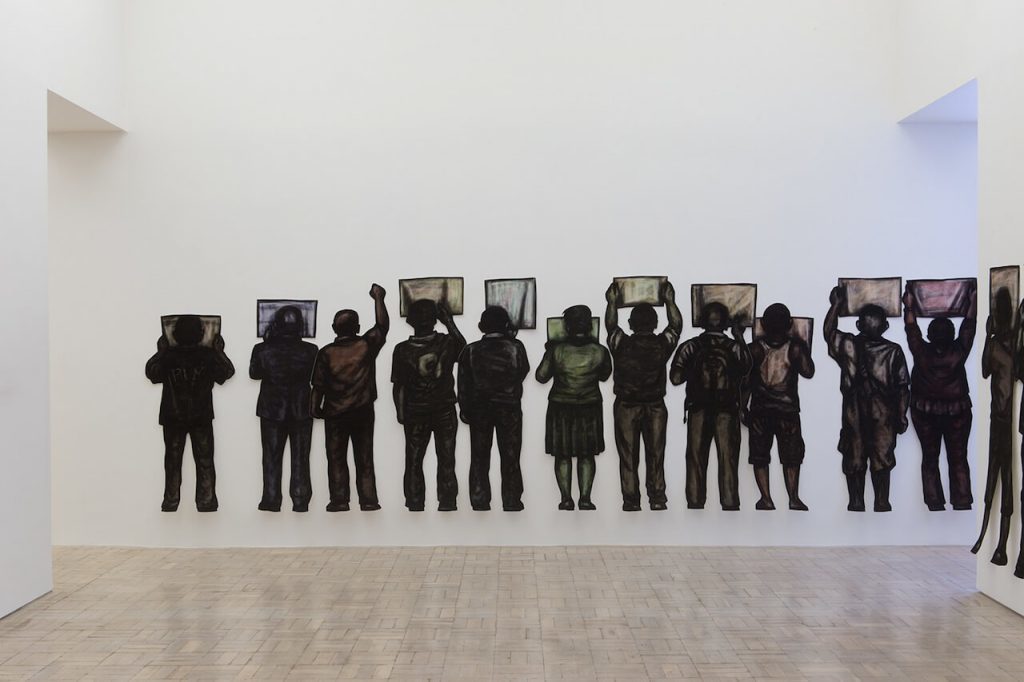57th Venice Biennale, Venise, Italy
13 May 2017 - 26 Nov 2017

Peterson Kamwathi, Monument to a Vessel. Stevenson, Cape Town. Courtesy of the artist, Photo by Mario Todeschini
The Kenyan Pavilion at the 57th Venice Biennale takes its title, Another Country, from a novel written by the renowned African American author James Baldwin.
The translation of Baldwin’s novel into an art exhibition seems obvious to the curator, Jimmy Ogonga. He asserts that we are facing strange times where globalization and the new global order are shaken by brutal realities, which will be explored in the Kenyan Pavilion by five different artists.
The Other Country that the Kenyan Pavilion proposes to the audience is a fiction. It is an ongoing self-analysis, a reflection on the state of affairs, inside and outside the physical boundaries of geography. Even though it is a national pavilion, the aim is not to show a nation but to give the floor to individuals whose stories, like a complex kaleidoscope, will lead us into the heart of an unspeakable reality: the reality of contemporary art in global times, and its unique iteration. This show doesn’t seek to show the difference, but the communality of practices and concerns. This other world belongs to everyone, and it is for everyone to elaborate and design it. This exhibition represents the Kenyan contribution to a world that, too often, tends to shrink emotionally and conceptually, reducing globalization to a mere commodity. We intend to expand it and to offer to each and every one an occasion to enter and to experience other dimensions of our humanity.
Curator: Jimmy Ogonga
Commissioner: Kiprop Lagat
ABOUT THE ARTISTS
Arlene Wandera works with multiple mediums, including sculpture, installation, performance and image making – mainly constructed using common, discarded and forgotten materials. Her work is driven by her experiences, exploring her childhood memories, complex interactions and notions of identity. The antagonism between Wandera’s heritage and present also informs much her production
process, woven into subtle and poignant narratives.
Mwangi Hutter were born in Nairobi, Kenya and Ludwigshafen, Germany. They merged their names and biographies and became a single artist – Mwangi Hutter. Working with video, sound, photography, installation, sculpture, painting and performance, they use themselves as the sounding board to reflect on changing societal realities, creating an aesthetics of self-knowledge and interrelationship.
Peterson Kamwathi‘s works are highly conceptual, with the thematic focus rooted in the Kenyan contemporary context, exploring the place, role, symbolism and meaning of processions and groupings within contemporary ceremonies and political protocol.
Paul Onditi‘s paintings explore richly layered images through the use of highly experimental, labour intensive techniques. Filmstrips, prints, transferred images, pared down layers of pigment, caustic acid and thin layers of oil paint are patched together to visualize an imaginative
world that unpacks chaos, divisions, tensions and nuances of urban and contemporary existence.
Richard Kimathi‘s practice as a painter is one of austerity and honesty – from the application of color, the compositions and the themes of his paintings, which take the forms of simple narratives, propelled with profound philosophical depth and of humor – elements that simplify complex conversations and dissipate the politico-sensational intercourse of contemporary dialogue.
.